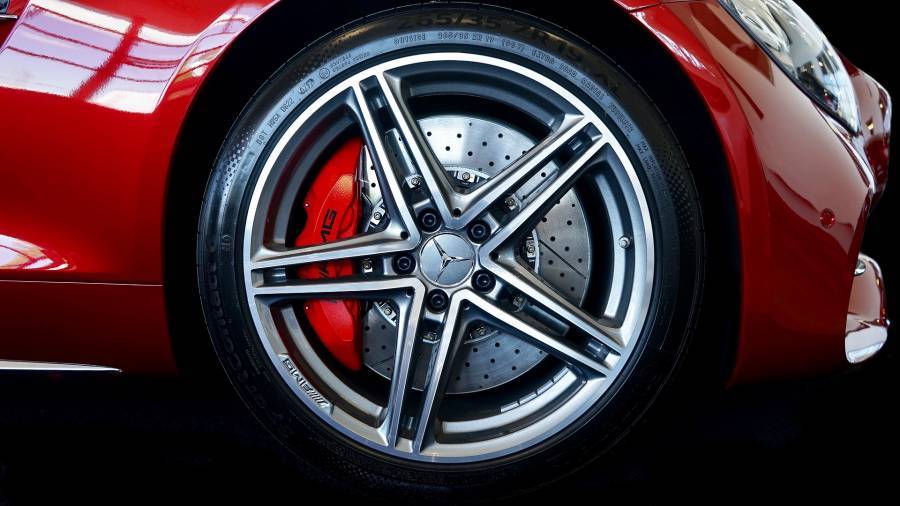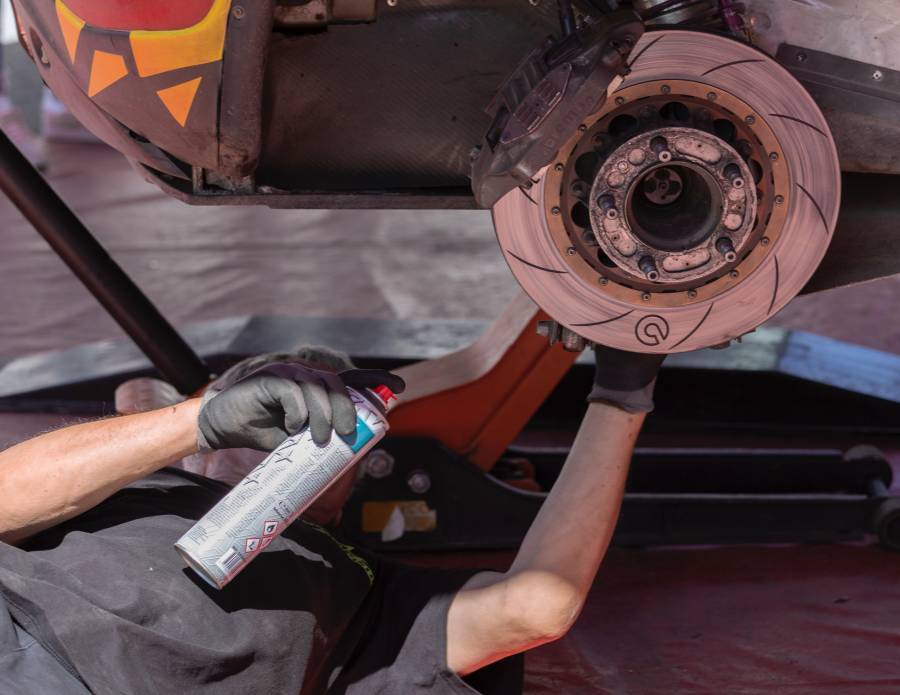Quick Navigation
The aluminum brake drum that is fitted with is the car’s identity. So, it’s often easier to slap a fresh coat of paint over your rims’ metal instead of painting the brake drums.

Still, many people are interested in learning more about painting brake drums. It might be pretty tricky, but with a bit of assistance, you can do wonders with it!
Is It A Good Idea To Paint Your Brake Drums?
Because the round housings for brake assemblies can become rusty over time, the rust can damage the brake assembly, reducing braking efficiency.
In addition, the rust can be unsightly and decrease your vehicle’s appearance.
So if you want to remove and paint the brake drums on your automotive vehicle, you may do so.
Painting the brake drums will not negatively impact the performance of the drum brakes, as long as you use the appropriate type of paint.
However, sometimes, it might not be a good idea. Here is why:
The Paint Will Flake Off
When you brake, the brake drums become incredibly hot. This heat can melt the enamel in your paint and make it flake off.
It can be hazardous as it can get in your way as you drive. It may also block the pins on your brakes, affecting their performance.
The Paint Doesn’t Last
Even if your brake drum doesn’t overheat enough to melt the paint, the paint will still fade away from all that friction in no time at all.
Benefits Of Painting Brake Drums
There are many reasons to paint brake drums.
It is a simple procedure that can be performed in a single afternoon, and the results can improve your car’s appearance and reduce corrosion.
Here are some of the benefits of painting brake drums.
Protection
When a car is stored outside, the constant exposure to moisture can cause the brake drum to rust. Over time, this rust will eat away at the drum and cause it to weaken.
The applied paint will protect the brake drum from moisture and prevent rusting. It helps to ensure that your brakes remain safe and that they last for years to come.
Paint Makes It Easier To Spot Problems
When you paint your brake drums, you will often spot a problem before it becomes severe.
For example, if your brake system is leaking, you will be able to spot it before it causes any damage.
Checking on your brake drums will help you spot a problem, and you can have it repaired before it leads to an accident or more severe damage.
Paint Improves Appearance
When your car has been sitting for a long time, the brakes may look worn down or rusty. Painting them can give them an instant make-over.

How To Paint Car Brake Drums In 7 Simple Steps
Have you ever wanted to paint your brake drums? It is easier than it seems.
Here is how to get started:
1. Get Yourself Some Brake Drum Paint
There are many different brands and types of paint. You can find a list online of the best paints for your car’s needs.
2. Clean The Brake Drum With A Wire Brush
Use a wire brush to clean the surface of the brake drum. It will help your paint stick to it better.
3. Sand The Brake Drum Using Sandpaper
Sandpaper is a great way to ensure that your paint will stick to the surface of the drum.
If you skip this step, your paint may not adhere to the drum properly, or it could even fall off!
In addition, it will also make it easier later on when you want to remove any excess paint from areas with chipping or scratching over time.
Such areas might be near where your rim meets up with the ground.
You can use any sandpaper. But, we recommend using either fine grit (120) for smoother results or coarse grit (60) if you want more texture in your final product.
The coarser grain size helps fill in scratches and other imperfections faster.
4. Paint The Brake Drum
Finally, you get to paint the brake drum. You can use a paintbrush and apply the paint over the entire surface of the drum.
Be sure to coat every area, including parts that you may not be able to see, such as where it connects to the tire.
After you do this, let it dry. You can also use spray paint instead of a brush if you prefer.
5. Apply Primer
After you have painted and dried your brake drum, it’s time to apply a primer. Most primers will come with instructions on using them and when they should be used.
Please read these before applying them to know what you are doing.
6. Apply The Paint Again Using Spray
Once you have applied primer, it’s time to start painting again. However, this time, use spray paint instead of using a brush or roller.
You need to make sure that you cover all areas on your drum with paint. Let this dry before moving on to the next step.
7. Let It Dry
Now that the last coat of paint has dried, you can sand down any areas where there is still some paint left on them.
It will allow for more even coverage over all areas of your drums and help prevent rusting.
Tips For Painting Your Brakes
It can be a challenging task when you’re painting your car’s brakes. The paint can get on your clothes or it may not look as good as you’d hoped.
Here are a few handy tips:
- Use spray paint designed for metal surfaces that can withstand high temperatures.
- Use painter’s tape to mask off your tires and anything else you are not planning on painting, so no paint gets on them.
- Make sure to paint the backs of your brake rotors and the fronts.
- Allow at least two hours of drying time between each coat of paint.
How Can You Tell When There Is A Problem With Your Brakes?
There can be several signs that there is something wrong. If any of these signs happen, you should take your car to a mechanic right away:
- There is vibration or shaking in the steering wheel when the brake pedal is pushed or when the car stops. It could mean the air in the brake lines or a bad rotor on your front brakes.
- The brake pedal feels spongy or soft when it is pushed down. It usually indicates air in the brake line somewhere or low brake fluid levels.
- The brake pedal goes all the way down to the floor without stopping the car.
Conclusion
As you can see, it’s not that hard to paint your drum brakes. It takes some patience, but you can do it right at home with the right set of tools and planning.
Plus, there are some little tricks that you might want to try out once or twice!

James has been a car enthusiast since his childhood when he learned the differences between a ford and a chevy from his father. He loves to drive and restore old cars with a special drive for Italian marvels. Currently, he has a 1968 Alfa Romeo. He has studied aeronautics and civil aviation in his college and still gets smitten by Galant SS and Lancer GSR.
He is a New York-based product training director working with a giant automotive retailer. He loves to review and uncover the vehicles and their fascinating stories. He believes in keeping it legitimate with a keen passion for research on the latest technological upgrades in cars. While reading his articles or blogs, you can sense the extensive research and dedication backing the piece of text. He loves fried chicken, music, and spending quality time with his pet dog.






